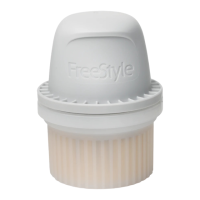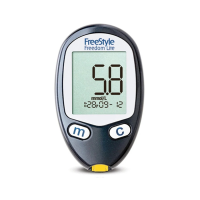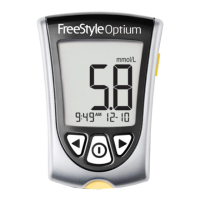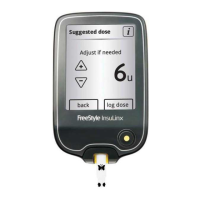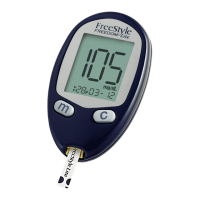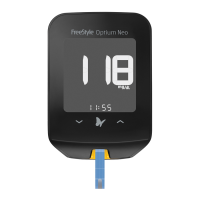Cautions and Important System Information:
What the System has not been evaluated for:
• The System has not been evaluated for use with other implanted medical
devices such as pacemakers.
• The System has not been evaluated or approved for use in pregnant
women, persons on dialysis, or people less than 4 years of age. It is
not known how dierent conditions or medications common to these
populations may aect performance of the system.
How to store the Sensor:
• Store the Sensor Kit between 4°C and 25°C. While you don’t need to keep
your Sensor Kit in a refrigerator, you can as long as the refrigerator is
between 4°C and 25°C.
When is Sensor Glucose dierent from Blood Glucose:
• Glucose levels in the interstitial uid can be dierent from blood glucose
levels and may mean that Sensor glucose readings are dierent from
blood glucose. You may notice this dierence during times when your
blood glucose is changing quickly, for example after eating, taking
insulin, or exercising.
When to remove the Sensor:
• On rare occasions, you may get inaccurate Sensor glucose readings.
If you believe your glucose readings are not correct or do not match
how you feel, perform a blood glucose test on your nger to conrm
your glucose. If the problem continues, remove your Sensor and apply
a new one
• Some individuals may be sensitive to the adhesive that keeps the
Sensor attached to the skin. If you notice signicant skin irritation around
or under your Sensor, remove the Sensor and stop using the System.
Contact your health care professional before continuing to use the System.
• If you have a medical appointment that includes strong magnetic
or electromagnetic radiation, for example an X-ray, MRI (Magnetic
Resonance Imaging), or CT (Computed Tomography) scan, remove the
Sensor you are wearing and apply a new one after the appointment.
The eect of these types of procedures on the performance of the
system has not been evaluated.
5 6
ART43974_rev-A_manual.indd 5-6ART43974_rev-A_manual.indd 5-6 2/17/21 8:32 AM2/17/21 8:32 AM

